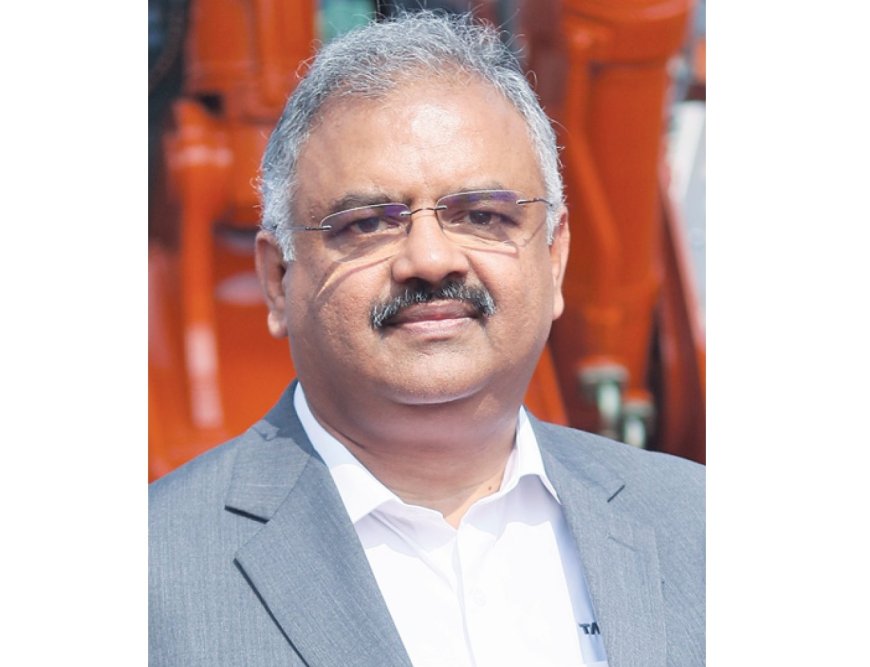Tata Hitachi welcomes the investment in infrastructure over the next several years, as announced by the Government.
How is this helping the construction equipment sector to improve its technological status and competitiveness in the global market

How do you see the government’s ‘Make in India’ programme and mission motivating industry to participate in it? How is this helping the construction equipment sector to improve its technological status and competitiveness in the global market?
“Make in India” is an important initiative by the government to enhance domestic industry capacity and skills to produce high quality products both for the domestic and export market. An initiative which helps in the expansion and growth of the manufacturing sector too – essential to enhance employment and maintain an appropriate trade balance.
Construction Equipment (CE) manufacturing in India has come a long way from being largely imported (in the early to late nineties) to a large part being manufactured locally to cater to the evolving customer requirements and tough local operating conditions. The government’s ‘Make in India’ programme and mission has certainly motivated the CE industry to focus on localization and indigenize technologies in the last several years.
From Backhoe Loaders to Mobile Cranes & Excavators, ‘Make in India’ now caters to most of the CE market comprising Compacting Equipment, Drills, Crushers, Concrete Equipment, Batching Plants, Pavers, Graders, Mining Dumpers, and Crawler Cranes, among others. ‘Make in India’ has further been supported by the sustained growth of Indian Infrastructure investment over the last decade leading to increasing volumes. Increased cost efficiencies have been achieved through modern, technologically advanced design and manufacturing processes; to the extent that most of the Indian Construction Equipment are today competitive in the international market where they are specifically required.
Several OEMs, including Tata Hitachi, manufacture and export a wide variety of Construction Equipment to the Global markets ranging from the Middle East, Africa, South East Asia as well as far as Europe, Latin America, and North America.
The industry association, Indian Construction Equipment Manufacturers Association (ICEMA), is also closely working with the government to encourage increased investment in manufacturing. The idea is to further enhance global competitiveness by increasing localization of critical components to the benefit of the country’s economy from exports, as well as to enhance employment opportunities.
It is worth mentioning here that we, at Tata Hitachi, have been at the forefront of this journey of Aatmanirbharta for over six decades of our incorporation. We were the first to bring hydraulic excavator technology into India through our collaboration with our principal, Hitachi Construction Machinery, Japan and in partnership with them have constantly sought to bring in advanced high-end technology into India, and at the same time fostering high levels of indigenisation of the same.
Foreseeing the government’s strong commitment and stable sentiments in the market, how do you evaluate your company’s growth in the coming years?
Tata Hitachi welcomes the investment in infrastructure over the next several years, as announced by the Government.
We compliment the government’s investments with our wide product range to cater to various opportunities created by this boom and will aid our customers in expanding their business efficiently and improving their profitability.
We will continue to introduce next-generation machines for our customers based on emerging requirements and developments to offer the most cost-effective, high performance, and reliable products and solutions.
What is your future strategies at a time when technological disruptions are rapidly defining businesses in the sector?
At Tata Hitachi, we are always seeking to enhance the profitability of our customers by providing them with technologically advanced, cost-effective reliable and fuel-efficient machines.
In our EX-Super+ Series hydraulic excavators, our superior hydraulics keeps the fuel efficiency high, and at the same time increases machine speeds to enhance productivity in terms of cost per ton of excavation. In our ZAXIS GI Series excavators, along with superior hydraulics, a very intelligent computer controls the performance and optimizes the parameters to maximize speeds and minimize fuel consumption.
Tata Hitachi’s TL340H PRIME wheel loader – India’s 1st hydrostatic wheel loader – has been designed with efficiency at its core. While most competition players offer traditional hydrodynamic technology, TL340H PRIME’s hydrostatic technology is equipped with a variable displacement pump to further its fuel savings advantage.
How is the scarcity of skilled operators affecting the prospects of the CE market?
The scarcity of skilled operators has a negligible impact on the CE industry because the helper on the machine gradually assumes the role of the operator whenever he gets an opportunity. The operator acts as his guide and teaches him the basics. This allows the helper to operate the machine on the actual job site when the production and skill requirements are less demanding. Gradually, the helper gains confidence and when a new machine is added to their employer’s fleet, the senior operator operates the new machine while the helper steps into the old one as an operator.
What are the challenges that you face and what are your suggestions to further ease a business-friendly climate?
Amongst the challenges, one of the most important is that of increase in interest rates, which is having a dampening effect on our businesses. The reason being that most of our customers are single machine owners. Their financials are, therefore, not very strong and an increase in rate of interest is leading to challenges of a limitation of funds.
In addition, commodity prices, which spiralled way back earlier, have begun to cool, but not to the extent of easing business. For example, the steel prices nearly doubled from pre-pandemic level in early 2022. However, it came down only by 20-25% in recent months. Hence, the impact remains substantial. As a result, we are not able to realize these increases from the customers to that extent.
The third major challenge that we are facing is that most of the state governments are cash strapped and they are not able to fund projects to the levels they had planned.
Hits: 18








